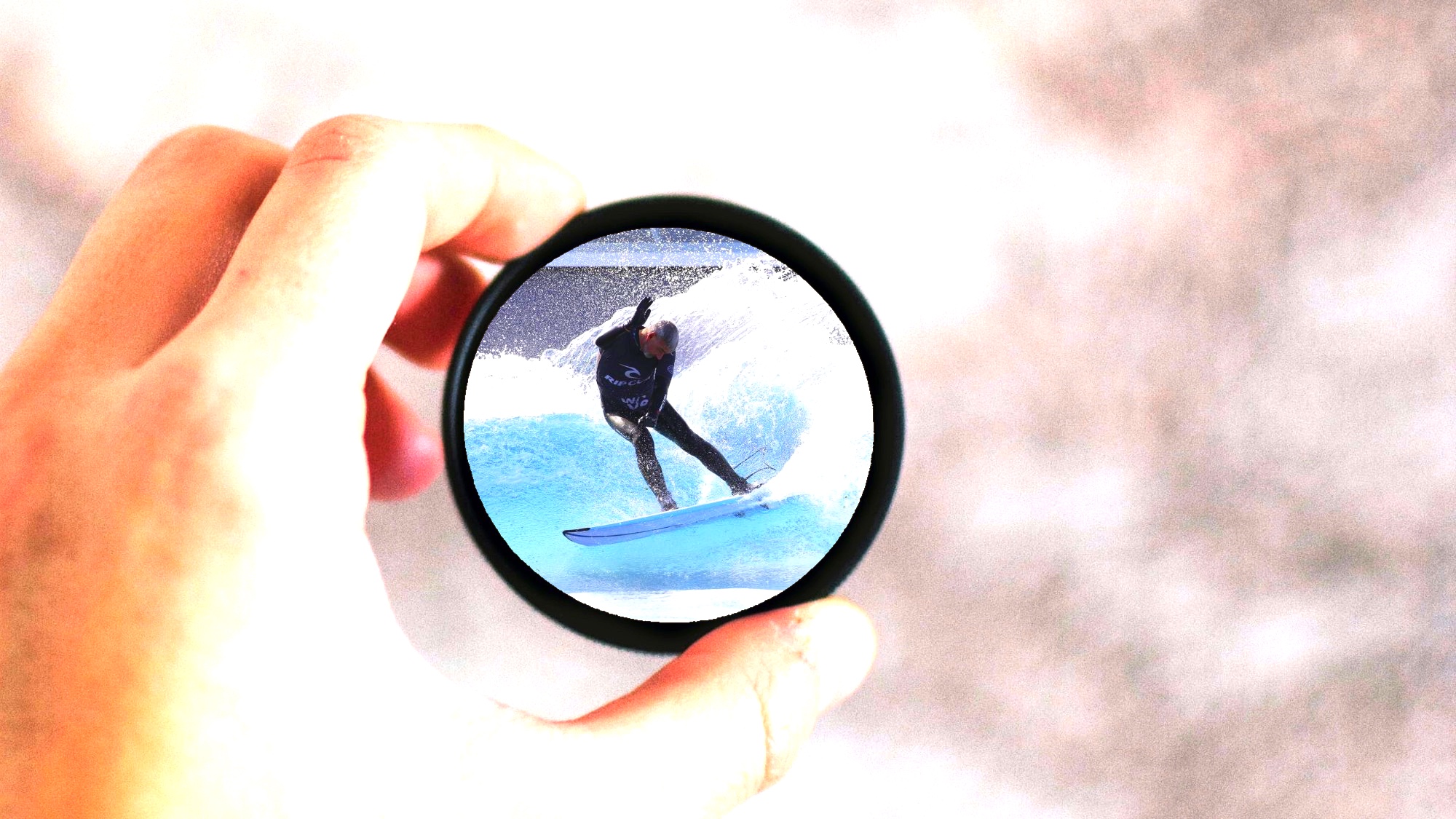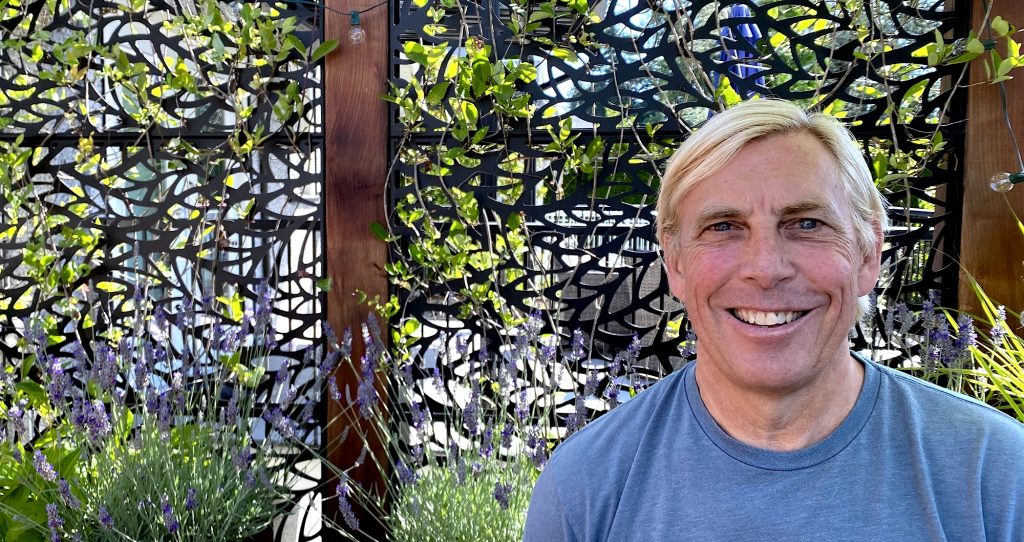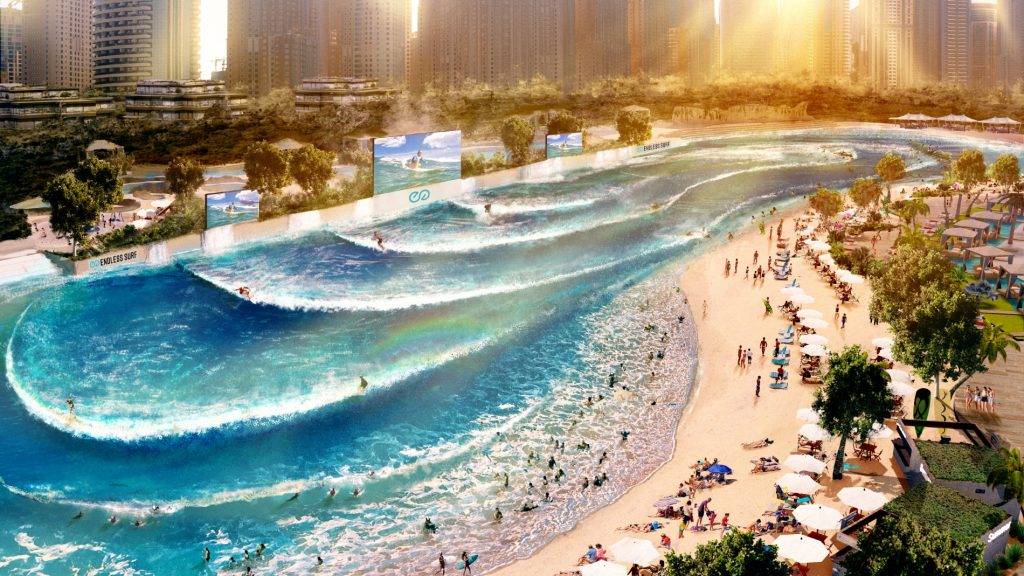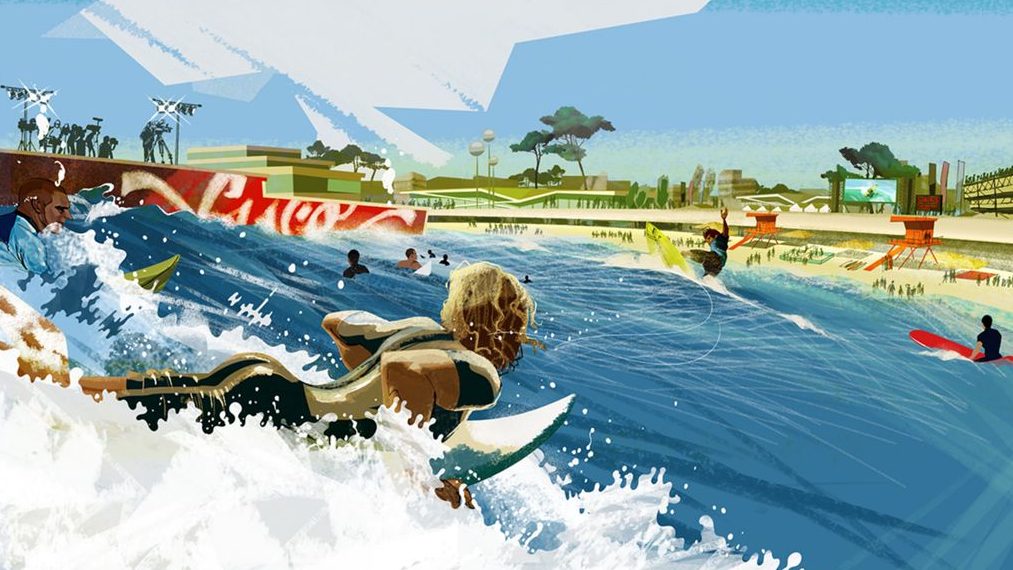How do they work? Every wave pool tech explained

With so many promotional pushes from wave-making technology companies, it’s hard to cut through the marketing hype and know what’s really going on. To get the lowdown on the different human-made wave companies out there, we spoke with geek-in-the-know Mark “Skip” Taylor of Surf Park Management.
Skip and his team’s job is to consider all the little details on how best to run a wave pool beyond just the surf itself. Duties include everything from advising on how to best optimize construction planning, ensure good customer experience, food logistics, towel and locker recommendations and more. But the crown jewel – at least in our opinion – is their role in deciding which wave company technology works best for a particular client.
Skip’s company serves the surf park developer, not the provider of any particular wave-making technology. To do a good job, he needs to be knowledgeable in all the waves available out there and follow up with unbiased recommendations. Knowing whether to recommend an Endless Surf, SurfLoch, Wavegarden, Surf Lakes, PerfectSwell, CityWave or Kelly Slater Wave Company system to a client is what keeps him up at night. For this reason, we thought he’d be the right person to share his knowledge on the current crop of wave technologies.
Before digging in, Skip reminds us this is a totally new frontier. And that each build is unique and inevitably will experience issues. These include everything from broken con-rods to botched bathymetry to flooding nearby houses – all the stuff that doesn’t get put in press release sendouts. The adage “Standing on the shoulders of giants” is applicable here as the coming boom of wave pools benefit from those who came before them.
“The wave-making companies work out these bugs with each new project they build and so it just gets better and better,” says Skip. “So for Korea, which hopefully opens in September this year, and will be the largest Cove yet, it will probably have a better product in terms of installation and bathymetry than those built before it.”

Some notes on profit and running a successful park: Skip says that the beautiful waves we see on Instagram don’t weigh as heavily on a park’s bottom line as we might think.
“The focus for a lot of surf parks is on the beautiful advanced wave, but that doesn’t always create the same experience for the early and mid-level surfer. The reality is that public surf parks have to rely on beginner and intermediate surfers to make business models work. But you wouldn’t know this from looking at all the videos.”
“The focus on the advance wave has been the goal, which totally makes sense to keep authenticity within the surf world, but the rest of the experience from the beginner and intermediate surf needs equal attention. Wave tech companies are developing the dream that appeals to the top ten percent of surfers but the reality is that they have to rely on the beginner and intermediates to drive the bottom line. The reality is that public surf parks have to rely on beginner and intermediate surfers to make business models work. But you wouldn’t know this from looking at all the videos.”
Skip says the industry is “building the plane as they’re flying it.” Here is his insight into each significant technology, along with their strengths and weaknesses.

It’s an obvious play for this leader from the waterpark industry. Jeff and Paul Chutter bought FlowRider years ago because they are early adopters and saw the opportunity in novelty surf. But the first wave pools are more “amusement park” waves, and they now see a valid space in the sport and recreation style venues and have launched the Endless Surf lagoon pool.
Their experience working with developers and waterpark attractions gives them a considerable step in the resources they can bring to the table. The work they can help with beyond the pool’s footprint, along with the deep understanding of pool construction aligned with architects, landscape designers, and the master planning process, is extensive. How they position themselves in the food chain of development differs from the other surf parks. In drawing on a comparison to the ski lift industry, you can buy different chair lifts made by different manufacturers. Still, you would never see a ski lift maker then ask the ski resort for a percentage of revenues, which some of the wave pool manufacturers feel they are entitled to. I understand that somewhat, as many of them helped create this space. So the guy who built the very first chair lift might have had those feelings in his day, but that’s not how it is today. I find with Whitewater coming into the game that they see themselves as a technology provider, and that’s it. It’s a straight-up deliverable product. They have a refreshing perspective compared to some other manufacturers we’ve worked with. But ultimately, they have to get a couple built to show the world.

HOW DOES IT WORK?
Their engineer came from American Wave Machines, and he’s very credible. They use a pneumatic system very similar to AMW but re-envisioned pool shape and pneumatic sequencing to create longer, and potentially more significant waves and will be able to accommodate more people. It’s yet to be proven but looks promising. The shape is different. Instead of the diamond Wavegarden shape, this one looks more like a heart shape and can accommodate many people in the water at one time.
STRENGTHS
One of the leaders in developing world-class water park attractions, they have developed a whole team, who knows how to build infrastructure and all the components that go into a wave pool. They have tons of design and development experience, and when it comes to doing a build-out in some far corners of the world, they are one of the few companies who know what needs to get done. Simple things like converting metric to inches can really hamper a build, and they are a team of engineers who know how to address these issues. The other thing is they look at themselves as a technology provider, just the wave pool and will do typical service and warranty programs without seeking a percentage of revenues like some of the other companies out there are doing, which is a substantial long-term bonus for ROI. They have some of the best business experience too.
WEAKNESS
They’ve never built a full-scale wave pool yet. So in that sense, it’s unproven. That, and that their background is in the amusement park industry and the company isn’t founded by a crew immersed in core surf culture. But their engineer and sales team are surfers with the same passion that we all have.
HOW DOES IT WORK?
Tom’s technology uses pneumatic systems, which consist of these big caissons (a watertight concrete or metal chamber) that push out air to make the water mimic the mechanics of a traditional ocean wave. It’s a solid, proven technology. The benefit of pneumatics is that all the technology is out of the water, which is crucial if you’re going to work on it. By not being submerged, any repair or maintenance costs are minimized because you don’t have to drain the pool. The current one at the Palm Springs Surf Club is just a test facility that is getting a lot of attention from the core surf world. They are now building the main wave pool adjacent to the small test pool that we see on Instagram. The wave now is maybe six seconds but is supposed to go up to sixteen seconds in the larger facility. Tom has six-to-eight chambers now, but his designs can go up to twenty-four. Tom really deserves to be recognized for all his work in this field as the Godfather of modern surf parks!
STRENGTHS
With Tom’s system, like other pneumatics, the benefit is the cheaper capital costs in building technology. Many parts are standard pieces of engineering equipment, so there’s no waiting for a custom-machined replacement part. Any engineer who knows pneumatics could work on it. The other strength is Tom’s extensive background in the surf park business and making wave pools of all types. He’s also super passionate about it. SurfLoch has a good proof of concept, and people are happy about the product.
WEAKNESS
The capacity could be an issue with only forty to fifty surfers at a time filling the pool – which is less than a full-size Wavegarden Cove. A full-size Surfloch venue hasn’t been shown yet, but overall looks like it would accommodate fewer people. The other issue is scalability, meaning if there are 20 projects globally at the same time, Waveloch doesn’t have the same depth of an engineering team behind them to deal with all those projects at once. In that scenario, other big surf park developers do have that scalability.
HOW DOES IT WORK?
It’s a pneumatic system similar to Whitewater and Surfloch. I’m sure there are nuances to the systems that come through in the patents and are obvious to engineers. I’m not an engineer and don’t quite get those subtle differences, but the three are ultimately comparable in terms of the wave generation – it’s the pools and bathymetry designs that seem to be the main differentiators.
STRENGTHS
BSR in Waco is their strength and definitely a big proof-of-concept success story in terms of creating a public surf park that has got more attention than any other. Also, their depth of knowledge in deepwater standing wave space is also big. Oasis in Montreal https://oasissurf.com/en/ uses their standing wave. As wave pools expand offerings to the public, they’ll need standing waves as well as wave pools and AWM can provide this.
WEAKNESSES
Pool size, and through-put to people is limited. The intermediate and beginner experience is limited which comes down to the bathymetry in the design. Their other weakness is similar to Surfloch, in that they have don’t have the internal resources to work at scale between multiple venues.
HOW DOES IT WORK?
Surf lakes is the plunger technology that creates a ton of energy very quickly and dissipates out across 5 different surf breaks catering to a wide variety of surfers. They’ve proven the design and made it work but they’ve also had serious bumps in the road along the way. I commend them though for the commitment to their test facility.
STRENGTHS
The design can hold a lot of people surfing at one time and a wide variety of levels of surfers. They can create a big, round beautiful lake and surround it with a nice beach.
WEAKNESSES
The cost to build the approximately 10-acre pools themselves is expensive. The deepest part of the pool is eight-to-ten meters deep to accommodate the technology. All the others technologies require pools about three meters at their deepest. Going down nine meters brings up a host of issues, from hitting water tables to boring through rock and a lot of other unknowns. And then the size; They have to cover ten acres of water plus the rest of the facility and amenities which is a big ask for any development project in terms of overall land costs.
XING FENG EXTREME SPORTS CENTER, CHINA
HOW DOES IT WORK?
It’s a plow wave like Kelly’s and like the first Wavegarden lagoon design. It’s a copycat design. They messed up the first design and had to rebuild it because they didn’t have enough people knowledgeable about surfing who were working on it. The engineers didn’t understand water dynamics. So they had to shut it down and reconstruct it and then open it up again is what I know.
STRENGTHS
The biggest strength is that money is not an issue. The government will back them for surfing in the Olympics. They are in a solid position as they have that financial backing.
WEAKNESSES
They don’t truly understand surfing or have experience in surf culture. So fine-tuning the surfing experience is a huge leap for them. The other point is that because it’s a plow wave, they don’t have a high frequency of waves. In addition, the noise and energy inherent with plow systems can take away from the user experience. Those spikes of energy to get the thing rolling also add to the cost.
HOW DOES IT WORK?
Kelly’s is a foil wave or plow wave. The technology and concept are the same as the original Wavegarden, but the muscle behind the engine is more robust than Wavegarden, and the bathymetry is different. For me, the rest of the surf park industry owes a debt of gratitude to him because Kelly singlehandedly brought the attention of the mainstream to surf parks. He let the world know that surf parks are a feasible thing. His awareness has been fantastic to bring sophisticated investors and developers to the idea. The wave is great. It’s a dream wave and the one venue I haven’t surfed. It’s a bit out of my price range, and unfortunately, I haven’t been invited yet.
STRENGTHS
They have a strong financial backing through the WSL. And they are running a successful private venue. And even though it’s expensive, they have customers. Also, the quality and length of the wave itself is a strength.
WEAKNESSES
It’s a challenging venue to build in terms of making sense of surrounding areas. Building around a long, narrow rectangle is difficult. Wavegarden Cove and Surf Lakes are more pleasing to build around. But Kelly’s is a big, long water drag strip. It’s also noisy. If you have a million-dollar home and at 6:30 in the morning the train starts running, you’re not going to be happy. Even if it is a perfect wave. All in all, the biggest challenge is wave frequency and like any of the plow waves it’s a bit frustrating to surf as there is a lot of pressure not to blow your wave as you get so few in a session. When I have surfed a plow wave, I find it creates a lot of anxiety. All the plow waves I have surfed I’ve left not really sated. I’ve surfed Coves and BSR and you leave feeling stoked. It’s horrible feeling when you get behind a section which is easy as the foil wave kind of pushes you away as you take off. When you’re off the wave you have to go back and do what I call the “paddle of shame” and then wait for what feels like an eternity for your next wave. That’s the biggest weakness with Kelly’s and any of the plow designs. There’s nothing worse than blowing a plow wave.
HOW DOES IT WORK?
I am under NDA (Non Disclosure Agreement) for a yet-to-be-announced project we are working on with them – but it’s now pretty open on the internet if you want to look that up. A key point to note is all mechanical parts and motors are out of the water and there is no single point of failure (a big concern for pools using the plow technology). The system can still operate even if a couple modules are not functioning properly. The number of modules is increasing too with each new venue; from their test venue in the Basque Country, to Bristol and now Melbourne that has the most models to date and is creating waves of up to 16-seconds. Their largest size facility will soon open in Korea with about 15% more wave generating capacity than Melbourne and will generate waves of 18-20+ seconds.
STRENGTHS
In my opinion, Wavegarden currently have a well proven surf technology for creating a financially viable surf park. They have a solid proven technology that has produced millions of waves reliably and have created a pool that offers a wide variety of zones and options allowing a large number of varying abilities to participate simultaneously. Throughput is the key to ROI and Wavegarden has done a good job of recognizing this in their design. Their other strength has shown through my experience of working with them is that they have built what currently is the most sophisticated teams in the surf park business in terms of engineering, design, construction and process. They have the capabilities to manage over 30-projects at varying stages of development simultaneously, which no other technology provider to date has been able to manage. They have a big funnel! Overall, they have done a great job of providing operators with a large variety of waves ranging from .5m to 2m with a wide variety of shapes and options including a slab wave that has received a lot of attention (but unfortunately that one is a notch above my level!).
WEAKNESS
The overall capital cost is still a challenge (but they are not unique with this issue either as it is similar with other wave technologies too) building a 6.5 acre pool with reinforced concrete is going to be a civil engineering challenge anywhere in the world…and then the customized technology costs on top really add up to tens of millions of dollars quickly. We are hopeful that as more installations are done, combined with industry wide competition, developers may see some costs start to come down. As much as everyone focuses on how the wave is generated, the bathymetry of any surf pool is actually where most of the magic happens. WG has done a great job with their “Reef” waves that everyone focuses on in the press but there has been some issues with the quality of the beginner to intermediate waves on the inside bays based on currents and bathymetry designs that happen when the Reef waves are being run at full power. I am confident this will be resolved for future Cove venues.
Main surf action photo by Image Cabin, digital art by Tiger Hayes.
Related Coverage
